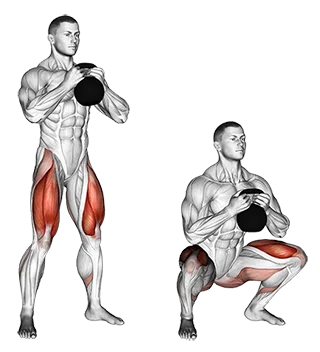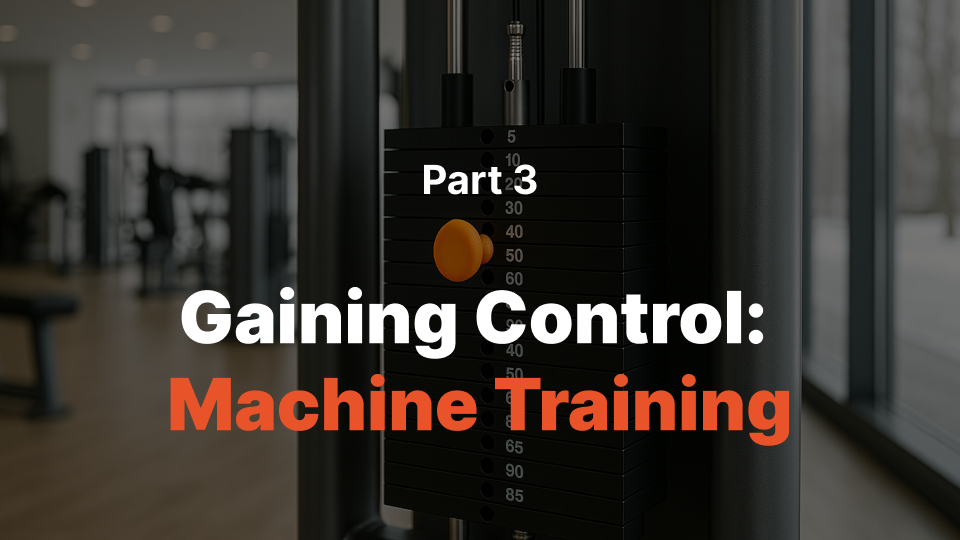Introduction
The Kettlebell Goblet Squat is a versatile lower body exercise that involves holding a kettlebell by the horn in front of your chest while performing a squat movement. This exercise strengthens the quadriceps, hamstrings, glutes, and core, improves mobility, and enhances overall stability. It's an effective choice for various fitness goals due to its compound nature, engaging multiple muscle groups simultaneously, making it a time-efficient exercise for building functional strength and power.
Muscles Worked
- Primary: Quadriceps, Gluteus Maximus, Hamstrings, Calves, Erector Spinae
- Secondary: Adductors, Abductor Muscles (outer thigh), Lower Back, Core
How to Do It (Step-by-Step)
- Stand with your feet shoulder-width apart, holding a kettlebell vertically by the horns with both hands at chest level.
- Lower your body as if sitting into an imaginary chair, keeping your back straight and chest lifted, until your elbows are outside your knees.
- Keep your core engaged, heels on the ground, and weights close to your body during the entire movement.
Tip: Keep your weight in your heels throughout the squat for better stability and balance.
Rep & Rest Guidelines
- Strength: 4–6 reps, 2–3 min rest
- Hypertrophy: 8–12 reps, 60–90 sec rest
- Endurance: 12–20 reps, 30–60 sec rest
Consider using the Auto Progression feature for increasing your kettlebell goblet squat workload over time.
Make sure to utilize the Rest Timer to ensure proper rest periods between sets and maintain optimal performance.
Form Tips
- Maintain a neutral spine and chest up to keep your back straight.
- Keep the kettlebell close to your body, with the handle under the wrist, for optimal control and balance.
- Squat by pushing your hips back as if you are sitting in a chair, ensuring your knees stay aligned over your ankles and don't collapse inward during the movement.
When to Use It
- For improving lower body strength and mobility in a functional manner
- As a compound exercise for building quadriceps, glutes, and core muscles
- To enhance explosive power in athletic movements such as jumping and plyometrics
Perform your workouts consistently to track your progress over time. Workout History
The kettlebell goblet squat primarily works the quadriceps, glutes, and hamstrings.
Hold the kettlebell by the horns, feet shoulder-width apart, push hips back, chest up, and squat down until thighs are parallel to the floor.
Start with a weight that allows you to perform 12–15 reps with proper form, gradually increasing the weight as you get stronger.
It's generally recommended to give muscles at least one day of rest between workouts to recover and grow.
Use a lighter weight, perform the squat in a more controlled manner, and consider using a box to aid in descending and ascending.


